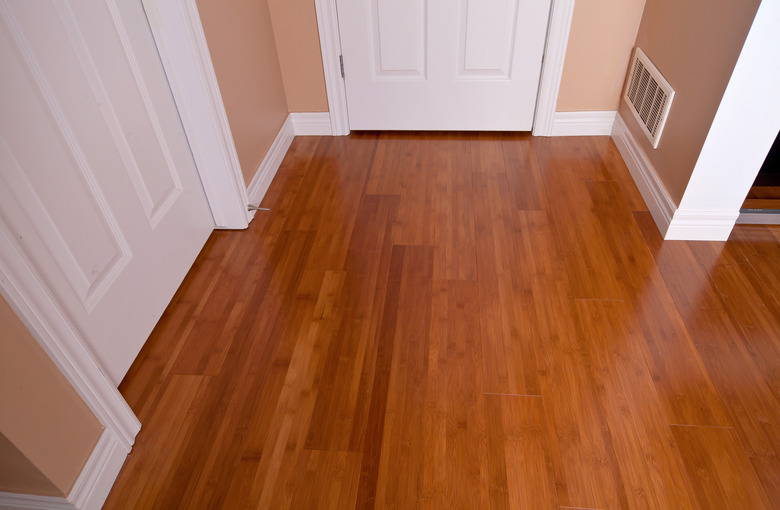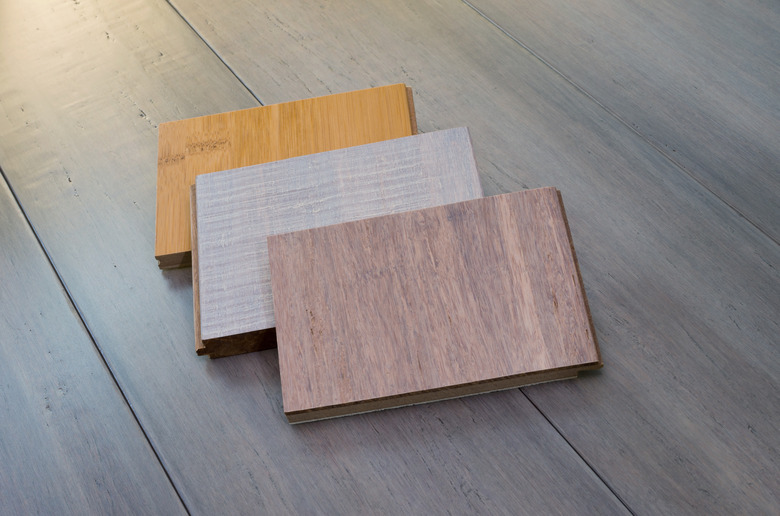Bamboo Flooring Underlayment: An Overview
Unless your bamboo flooring comes with a protective backing, it's best to assume you need an underlayment. It's virtually a requirement for nail-down bamboo as well as a floating floor, and it will increase the life of the floor. Without a flooring underlayment between the subfloor and your new bamboo flooring, there's a good chance the planks, even strand-woven ones, will show signs of moisture damage such as warping and separating, and the floor won't feel as comfortable as it should.
If you have your bamboo flooring professionally installed, the installer will probably include an underlayment in the job. If you're doing the job as a DIY project, you should include the underlayment in your materials costs. Underlayment cost varies according to type, but it's usually in the neighborhood of 50 cents to 75 cents per square foot.
Why You Need an Underlayment
When it comes to underlayment requirements, bamboo isn't much different from hardwood flooring. Because it's a natural material like wood, bamboo responds to subfloor moisture by swelling, and that can make the edges curl, so the number one job of an underlayment is moisture protection. The most basic bamboo flooring underlayment is a simple vapor barrier than can be as unsophisticated as a sheet of plastic.
Another characteristic bamboo shares with hardwood is that it provides very little in the way of a heat barrier, so most underlayments are made from thermally insulating materials and are generally 3 to 6 millimeters thick. Because bamboo is just as hard or harder than hardwood, the flooring planks broadcast the sound of footsteps through the subfloor, so the third job an underlayment performs is to absorb the noise. This also requires a thick material, and as an added benefit, a thick underlayment acts as a cushioning layer and makes the floor more comfortable on which to walk.
Bamboo Flooring Underlayment Materials
You don't have to search for an underlayment designed just for bamboo flooring — any hardwood flooring underlayment will do the job. When it comes to underlayment material, you have several options, and it's common to combine them depending on whether the flooring installation is nail-down or floating.
- Foam: Probably the least-expensive option, foam underlayment provides a moisture barrier as well as some cushioning.
- Rubber: If you need a sound barrier as well as moisture protection, rubber is one of the best choices. Usually made from recycled materials, it's an eco-friendly choice.
- Cork: If you want a material that provides both a thermal and sound barrier, cork is what you seek. It's an anti-microbial material that helps to prevent mold growth.
- Felt: The number one sound and thermal absorbing material, felt is also made from recycled materials and is eco-friendly. Some but not all products come with a built-in vapor barrier, so be sure to check if you need moisture protection.
Best Underlayment for Bamboo
If you're installing nail-down solid bamboo, Ambient Bamboo Floors recommends a felt paper or kraft underlayment, but the company advises that neither of these materials constitutes a vapor barrier. If the subfloor is over a crawl space, it needs to be sealed before you install either of these underlayments. In some situations, such as doing a flooring installation on a below-grade concrete slab, you should consider combining one of them with plastic sheeting.
When installing a floating floor on a wood or concrete subfloor, especially over radiant heat, Ambient Bamboo Floors recommends a three-in-one underlayment, which is one that acts as a moisture and sound barrier while providing cushioning. Rubberized cork and plasticized felt are two common combinations that can provide all these benefits, and there are others. The higher the sound transmission class rating, the better the sound absorption of the underlayment and the quieter the floor will be.
Installing an Underlayment
The most common installation method for floor underlayment is stapling it to the subfloor. This works for wood subfloors, but for concrete slabs, you sometimes have to let the underlayment float freely. It's hardly ever necessary to glue it, and that usually isn't a good idea.
You basically unroll the underlayment onto the subfloor and either secure it with staples or let it float. If you want moisture protection, you need to seal the seams. Some products have preglued edges, but for others, you need tape, and you should use the one recommended by the manufacturer.

